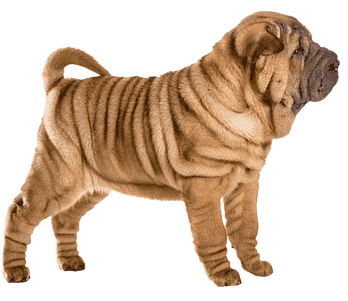Health Care and Guarantee
Our experienced team of veterinarians, groomers, and pet care specialists, we provide comprehensive services to keep your furry friends healthy and thriving.
CARE FOR YOUR PUPPIES

Chinese Shar-Pei Health
Shar-Peis are prone to certain health conditions, especially skin conditions. Not all Shar-Peis will get any or all of these diseases, but it’s important to be aware of them if you’re considering this breed.
- Shar-Pei Fever: Also known as swollen hock syndrome, this condition manifests in the swelling of the hock joint (sometimes both joints), and results in reluctance to move, abdominal pain, vomiting, diarrhea, and shallow breathing. Dogs have one or more bouts of unexplained fever with temperatures as high as 103 to 107 degrees. The condition usually starts at 18 months, but can appear when the dog is an adult. The fever lasts 24 to 36 hours, and treatment includes reducing fever and pain.
- Hypothyroidism: This is a disorder of the thyroid gland. It’s thought to be responsible for conditions such as epilepsy, alopecia (hair loss), obesity, lethargy, hyperpigmentation, pyoderma ,and other skin conditions. It is treated with medication and diet.
- Cancer: Symptoms include abnormal swelling of a sore or bump, sores that do not heal, bleeding from any body opening, and difficulty with breathing or elimination. Treatments for cancer include chemotherapy, surgery, and medications.
- Elbow Dysplasia: Similar to hip dysplasia, is also a degenerative disease. It’s believed to be caused by abnormal growth and development, which results in a malformed and weakned joint. The disease varies in severity: the dog could simpy develop arthritis, or he could become lame. Treatment includes surgery, weight management, medical management, and anti-inflammatory medication.
- Demodectic Mange: Also known as demodicosis, this is caused by the demodex mite, which a mother dog passes to her pups in their first few days of life. (The mite can’t be passed to humans or to other dogs; only by mother to pups.) Demodex mites live in hair follicles and usually don’t cause problems, but if your Shar-Pei has a weakened or compromised immune system, he can develop demodectic mange. In its localized form, patches of red, scaly, balding skin appear on the head, neck and forelegs. It often clears up on its own, but even so, you should take your dog to the vet to prevent it from turning into the generalized form of demodectic mange, which covers the entire body and causes infection.
- Seborrhea: This is a condition characterized by flaky skin and a rancid odor. It is usually a secondary condition to allergy, infection, or other disease. Treatment includes bathing in medicated shampoo and treating the underlying disease.
- Pyoderma: Another skin condition, this is a bacterial infection of the skin, and is fairly common in the Shar-Pei. It can be a primary or secondary infection; the latter results from an underlying condition such as allergy or hypothyroidism. Pyoderma is treated with antibiotics.
- Patellar Luxation: Also known as slipped stifles, this is a common problem in small dogs. The patella is the kneecap. Luxation means dislocation of an anatomical part (as a bone at a joint). Patellar luxation is when the knee joint (often of a hind leg) slides in and out of place, causing pain. This can be crippling, although many dogs lead relatively normal lives with this condition.
- Hip Dysplasia: This is an inherited condition in which the thighbone doesn’t fit snugly into the hip joint. Some dogs show pain and lameness on one or both rear legs, but others don’t display outward signs of discomfort. (X-ray screening is the most certain way to diagnose the problem.) Either way, arthritis can develop as the dog ages. Dogs with hip dysplasia should not be bred — so if you’re buying a puppy, ask the breeder for proof that the parents have been tested for hip dysplasia and are free of problems.
- Gastric Torsion: Also called bloat, this is a life-threatening condition that can affect large, deep-chested dogs. This is especially true if they are fed one large meal a day, eat rapidly, drink large volumes of water after eating, and exercise vigorously after eating. Bloat is more common among older dogs. GDV occurs when the stomach is distended with gas or air and then twists (torsion). The dog is unable to belch or vomit to rid himself of the excess air in the stomach, and the normal return of blood to the heart is impeded. Blood pressure drops and the dog goes into shock. Without immediate medical attention, the dog can die. Suspect bloat if your dog has a distended abdomen and is salivating excessively and retching without throwing up. He also may be restless, depressed, lethargic, and weak, with a rapid heart rate. It’s important to get your dog to the vet as soon as possible if you see these signs.
- Osteochondrosis Dissecans (OCD): This orthopedic condition, caused by improper growth of cartilage in the joints, usually occurs in the elbows, but it has been seen in the shoulders as well. It causes a painful stiffening of the joint, to the point that the dog is unable to bend his elbow. It can be detected in dogs as early as four to nine months of age. Overfeeding of “growth formula” puppy foods or high-protein foods may contribute to its development.
- Cutaneous Mucinosis: Mucin is the substance in the skin that causes wrinkling. Clear and stringy, it acts like glue when a dog is wounded. Some Shar-Peis have an excess of mucin, however, which causes it to form clear bubbles on the skin that may rupture and ooze. It may be associated with allergies and is treated with steroid therapy.
- Glaucoma: Glaucoma is defined by an increased pressure in the eye, and can be found in two forms: primary, which is hereditary, and secondary, which is caused by decreased fluid in the eye due to other eye diseases. Symptoms include vision loss and pain, and treatment and prognosis vary depending on the type. Glaucoma is treated surgically or with eye drops.
- Entropion: This is the inward rolling of the eyelid, usually the lower one, and is found in both eyes. It causes vision loss and irritation and generally occurs before a dog turns a year old. Corrective surgery when the dog reaches adulthood is an effective treatment.
- Skin fold dermatitis, also known as intertrigo, is a common inflammatory condition that affects dogs with excessive skin folds. It occurs when the skin in these areas becomes irritated and infected due to the accumulation of moisture, heat, bacteria, and other pathogens. The condition is often manageable with topical treatments, although it may require ongoing care to prevent recurrence.
- Atopic dermatitis: Atopic dermatitis (AD) — often simply referred to as atopy — is a chronic inflammatory skin disease in dogs. Similar to eczema in humans, it is one of the most prevalent allergic skin conditions, affecting approximately 10-15% of the canine population. The condition is usually triggered by an overreaction of the dog’s immune system to environmental allergens, which can include pollen, mold spores, dust mites, and even certain foods. These allergens typically penetrate the skin barrier and initiate an immune response that leads to inflammation, itching, and other clinical signs.
- Abscesses in dogs: An abscess in dogs is a localized pocket of pus that forms due to infection, typically caused by bacteria. It occurs when the body responds to infection by isolating the bacteria and surrounding tissues, creating a collection of pus. Abscesses are often painful, swollen, and warm to the touch.
French Bulldog Health
Not all Frenchies will get any or all of these diseases, but it’s important to be aware of them if you’re considering this breed.
- Hip Dysplasia: Hip dyplasia is a heritable condition in which the femur doesn’t fit snugly into the pelvic socket of the hip joint. Hip dysplasia can exist with or without clinical signs. Some dogs exhibit pain and lameness on one or both rear legs. As the dog ages, arthritis can develop. X-ray screening for hip dysplasia is done by the Orthopedic Foundation for Animals or the University of Pennsylvania Hip Improvement Program. Dogs with hip dysplasia should not be bred. Ask the breeder for proof that the parents have been tested for hip dysplasia and found to be free of problems.
- Spinal Bifida: Spinal Bifida in dogs is a birth defect where the vertebrae (backbone bones) don’t fully close over the spinal cord. This can expose or damage the spinal cord, leading to varying degrees of nerve problems in the legs, bladder, and bowel control.
- Brachycephalic Syndrome: This disorder is found in dogs with short heads, narrowed nostrils, or elongated or soft palates. Their airways are obstructed to varying degrees and can cause anything from noisy or labored breathing to total airway collapse. Dogs with brachycephalic syndrome commonly snuffle and snort. Treatment varies depending on the severity of the condition but includes oxygen therapy and surgery to widen nostrils or shorten palates.
- Allergies: Allergies are a common problem in dogs. There are three main types of allergies: food-based allergies, which are treated by an elimination process of certain foods from the dog’s diet; contact allergies, caused by a reaction to a topical substance such as bedding, flea powders, dog shampoos, and other chemicals, and treated by removing the cause of the allergy; and inhalant allergies, caused by airborne allergens such as pollen, dust, and mildew. The medication for inhalant allergies depends on the severity of the allergy. It is important to note that ear infections often accompany inhalant allergies.
- Hemivertebrae: This is a malformation of one or more vertebrae that causes it to be shaped like a wedge or triangle. It can occur on its own or with other vertebrae malformations. A hemivertebra can cause no problems, or it can put pressure on the spinal cord, leading to pain, weakness, and/or paralysis. There is no treatment for the condition unless there is spinal cord pressure.
- Patellar Luxation: Also known as “slipped stifles,” this is a common problem in small dogs. It is caused when the patella, which has three parts — the femur (thigh bone), patella (knee cap), and tibia (calf) — is not properly lined up and slips in and out of place (luxates). This causes lameness or an abnormal gait (how the dog moves). It is a congenital disease, meaning it’s present at birth, although the actual misalignment or luxation does not always occur until much later. The rubbing caused by patellar luxation can lead to arthritis, a degenerative joint disease. There are four grades of patellar luxation ranging from grade I, an occasional luxation causing temporary lameness in the joint, to grade IV, in which the turning of the tibia is severe and the patella cannot be realigned manually. This gives the dog a bowlegged appearance. Severe grades of patellar luxation may require surgical repair.
- Skin fold dermatitis, also known as intertrigo, is a common inflammatory condition that affects dogs with excessive skin folds. It occurs when the skin in these areas becomes irritated and infected due to the accumulation of moisture, heat, bacteria, and other pathogens. The condition is often manageable with appropriate topical treatments, although it may require ongoing care to prevent recurrence.
- Intervertebral Disc Disease (IVDD): IVDD occurs when a disc in the spine ruptures or herniates and pushes upward into the spinal cord. When the disc pushes into the spinal cord, nerve transmissions are inhibited from traveling along the spinal cord. Intervertebral Disc Disease can be caused by trauma, age, or simply from the physical jolt that occurs when a dog jumps off a sofa. When the disc ruptures, the dog usually feels pain and the ruptured disc can lead to weakness and temporary or permanent paralysis. Treatment usually involves nonsteroidal anti-inflammatory drugs (NSAIDs) made especially for dogs. Never give your dog Tylenol or other NSAIDs made for people, as they can be toxic. In some cases, surgery can help, but it must be done within a day or so of the injury. You may also want to ask your veterinarian about physical rehabilitation. Treatments such as massage, water treadmills, and electrical stimulation are available for dogs and can be very successful.
- Von Willebrand’s Disease: This is a blood disorder found in humans and dogs. It affects the clotting process due to reduced von Willebrand factor in the blood. A dog affected by von Willebrand’s disease will have signs such as nose bleeds, bleeding gums, prolonged bleeding from surgery, and prolonged bleeding during heat cycles or after whelping. Occasionally, blood is found in the stool. This disorder is usually diagnosed in your dog between 3 and 5 and cannot be cured. However, it can be managed with treatments that include cauterizing or suturing injuries, transfusions of the von Willebrand factor before surgery, and avoiding certain medications.
- Cleft Palate: The palate is the roof of the mouth and separates the nasal and oral cavities. It is made up of two parts: hard and soft. A cleft palate has a slit that runs bilaterally or unilaterally and can range in size from a small hole to a large slit. A cleft palate can affect both the hard and soft palate separately and together and may cause a cleft lip. Puppies can be born with cleft palates, or a cleft palate can occur from an injury. Cleft palates are fairly common in dogs, but many puppies born with a cleft palate do not survive or are euthanized by the breeder. The only treatment for a cleft palate is surgery to close the hole, although not all dogs with a cleft palate require the surgery. It is important to get a diagnosis and treatment recommendation from your veterinarian.




0
+
Awards Win
0
k
Happy Clients
0
+
Professional Vets
0
%
Protection



NEWS LETTER
Subscribe To Our Newsletter
We provide Excellent Veterinary Care to Produce Top Quality puppies with Exceptional Health, Temperament, Confirmation, and Good Looks. We are continually seeking on going Resources and Knowledge to help better the breed. Breeding for us is a Passion
Working Hours
Monday – Saturday
12:00 pm – 14:45 pm
Sunday – Thursday
17:30 pm – 00:00 pm
Friday – Saturday
17:30 pm – 00:00 pm


